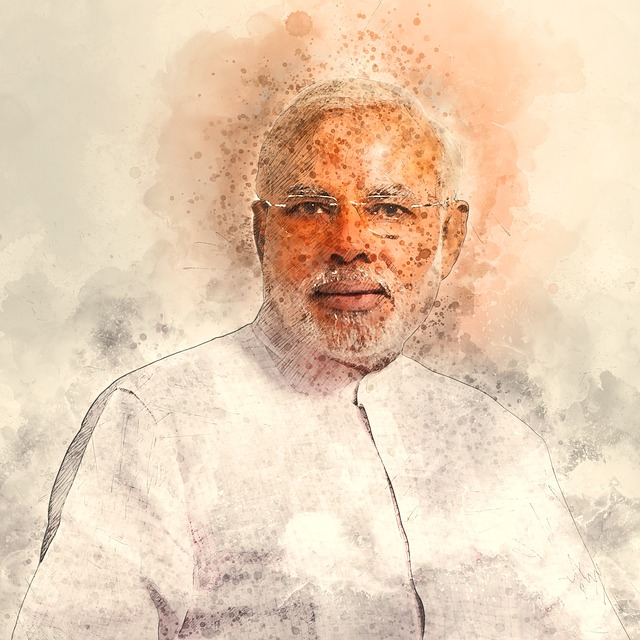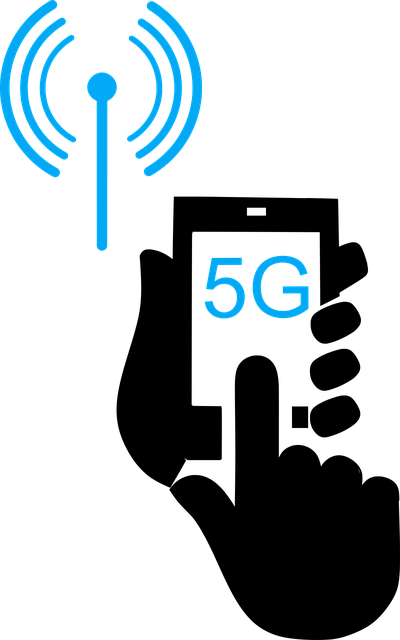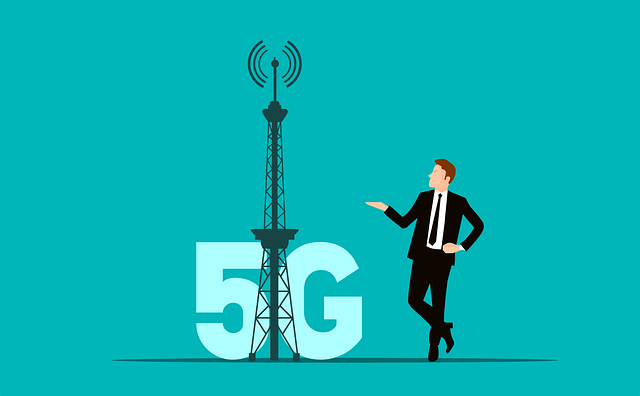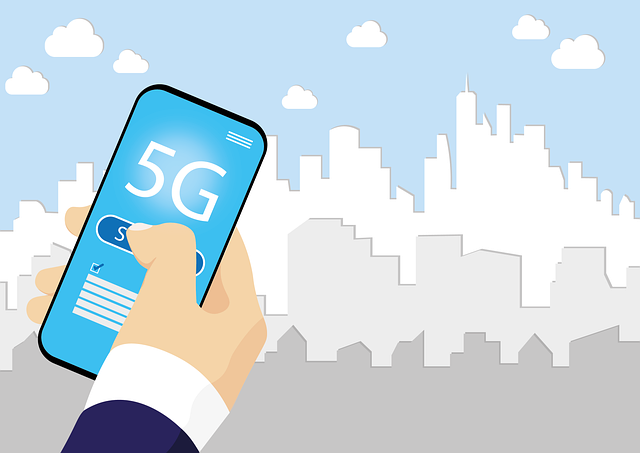rajkotupdates.news:pm-modi-india-plans-to-launch-5g-services-soon
In the Union Budget 2022, telecom minister Nirmala Sitharaman announced that 5G mobile services will be launched in India by 2022-2023. Here in this article, we will read about this query rajkotupdates.news:pm-modi-india-plans-to-launch-5g-services-soon. This announcement is in line with an earlier announcement made by the telecom regulator TRAI. TRAI also said that the spectrum auction for 5G mobile services will begin this year.
Auction of 5G spectrum
The FCC’s decision to auction off the 5G spectrum is an important move toward building a more powerful and faster wireless network. Currently, wireless carriers hold exclusive licenses to use these frequencies. With this new auction, those licenses will be auctioned off to the highest bidder. The auction is expected to be held in the coming weeks. The winning bidder will be given the right to pick and choose the exact blocks and regions for their networks.
While there are many factors involved in the auction process, one factor that should be considered is the actual demand for radiowaves. This will play a large role in the results of the auction. If the demand for radiowaves is high enough, this auction will be a good opportunity for telecom companies to expand. In addition to enabling new businesses, 5G services also have the potential to create new employment opportunities and additional revenue for enterprises.
Prime Minister Narendra Modi
Prime Minister Narendra Modi has announced that rajkotupdates.news:pm-modi-india-plans-to-launch-5g-services-soon, starting with a few select cities. The goal is to provide seamless coverage, high data rates, and less delay in internet connectivity. The 5G network is expected to be widely available by 2024. Bharti Airtel is planning to launch 5G services in eight cities starting today, while Reliance Jio is targeting coverage in all major cities within the next 18 months.
The launch is expected to begin with a demonstration in New Delhi. During the event, representatives from telecom operators and vendors will show off 5G devices. The event is expected to draw global players and will run for three days at Pragati Maidan. On May 17, Modi also inaugurated India’s first 5G testbed, enabling industry players to test their 5G products locally, reducing the need to rely on expensive facilities abroad.
5G is coming, and Prime Minister Narendra Modi and Telecom operators are working hard to get India up to speed. The president traveled to India with Telecom Minister Ashwini Vaishnav and Bharti Airtel billionaires Mukesh Ambani and Sunil Bharti Mittal, and Vodafone Idea founder Kumar Mangalam Birla. They spent the day learning about the indigenous development of 5G technologies.

rajkotupdates.news:pm-modi-india-plans-to-launch-5g-services-soon
- Prime Minister Narendra Modi plans to launch five-gigabit wireless services across India in the near future.
- The government’s National Broadband Mission (NBM) will be responsible for the launch.
- This initiative is being led by the government’s ministers for finance, electronics, and education.
- The announcement will also include representatives from telecommunications firms Reliance Jio, Bharti Airtel, and Vodafone Idea. Initially, these companies will launch 5G services in seven cities.
- But in two years, the government plans to have 5G services available in the country.
The new 5G network will offer faster Internet speeds and support for government activities in various sectors. It will also be the fastest way to get in touch with friends and family. It will also enable India to be more connected to the world.
Telecom operators
In an address to a gathering in Pragati Maidan, New Delhi, Prime Minister Narendra Modi announced that rajkotupdates.news:pm-modi-india-plans-to-launch-5g-services-soon . The new technology is expected to deliver high-speed, low-latency, and reliable communications. It also promises to reduce the use of spectrum and energy. It will also provide better coverage and speed than current 4G networks. The service is expected to be available in the country by the end of this year.
The technology will enable ultra-low-latency connections, seamless connectivity across mobile and fixed networks, and full-length HD video downloads. It will also enable new applications such as connected cars, advanced mobile cloud gaming, and immersive augmented reality experiences. Prime Minister Modi was shown a live demonstration of 5G technology. He also inspected the Airtel 5G booth. This technology is expected to have a significant impact on India’s economy, with an estimated USD 450 billion in economic benefits by 2035.
What is 5G?

If you’re wondering about the new wireless technology, you’re not alone.
- There are more than two-dozen operators investing in 5G technology around the world.
- In April 2019, South Korea was the first nation to make use of the new standard.
- The country’s carriers chose equipment from Samsung, Ericsson, and Nokia.
- Samsung was the biggest supplier in South Korea, supplying 53,000 of the country’s 86,000 base stations.
- Currently, nine companies make radio hardware for 5G networks.
- These companies include Cisco Systems, Datang Telecom, Huawei, Samsung, and ZTE.
5G networks
With the advent of 5G networks, companies will be able to deliver higher-bandwidth communications that are lower in latency. This will allow them to compete with traditional ISPs and enable new applications in machine-to-machine and the Internet of Things (IoT) areas. The technology also supports the use of virtualized environments and economies of scale.
5G networks will be able to support speeds of up to 1,000 megabits per second, which is more than twice the current speed of 4G networks. This means that users can start streaming a 10-minute YouTube video without buffering, and download apps and Netflix episodes in minutes instead of hours. In addition, 5G networks will make it possible to deliver high-quality wireless video streaming, such as 4K resolution.
Compared to 4G networks
- As the number of mobile users increases, so do the demands placed on networks.
- With the emergence of the Internet of Things (IoT), growing mobile workforces, and increased smartphone usage, the 4G era introduced numerous networking trends and challenges.
- In response, 5G is expected to address these challenges while increasing speeds and cell density.
- As a result, it’s important for organizations to understand the differences between 4G and 5G network architectures and how they will affect their business operations.
In 2008, the ITU Radiocommunication Sector issued new standards that required mobile networks to increase their speed and bandwidth. While 100 megabits per second were unthinkable back then, these new standards inspired developers to deliver better technology. And only a few years later, 4G networks caught up to these standards. They switched from spread spectrum radio technology to OFDMA multi-carrier transmission, enabling higher upload and download speeds and a wider range of services.
Speeds
- 5G networks can offer peak upload speeds of 1 Gbps, so you can hold virtual meetings in 8K quality without any connection issues.
- However, download speeds will vary from carrier to carrier, and will depend on the type of network.
- Different frequencies will deliver different speeds, so be sure to check your carrier’s website to see what the maximum download speed is.
While 5G speeds are not yet available everywhere, some areas have already experienced true band speeds. In addition, 4G is still in use in areas with low bandwidth and spectrums. While mid-band versions of 5G are in development, 5G is still very much in its early stages.
Applications
With speeds up to 100 times faster than today’s 4G speeds, 5G promises to revolutionize connectivity in rural areas. With these speeds, it will become possible to use video in a wider variety of applications, manipulate large files on the go, and even create virtual reality experiences. As such, 5G will bring new possibilities to virtually every sector.
One of the first concrete applications of 5G is expected to be in the autonomous environment, or Industry 4.0. This new technology aims to transform production methods, processes, and business models. It is likely to speed up processing, analysis, and decision-making by enabling the densification of connected objects.
How to Use 5G on Your Phone
If you have an iPhone, you’re probably wondering how to use 5G on your phone. First of all, you’ll need to know whether your phone supports it. The iPhone 12 and later models will be compatible. To learn if your phone is compatible with 5G, check the device’s specifications.

mmWave support
5G mmWave support for 5G networks will enable service providers to deliver high data rates over a wider spectrum. The new technology will enable new capabilities like low-latency video streaming and online gaming, and will also enable the evolution of 5G smart factories. This will boost the deployment of 5G services, create a large number of new jobs, and usher in a new era of technological advancement.
Several service providers are exploring 5G mmWave deployments. Verizon, for example, invested heavily in mmWave support in its 5G service, which is currently available in some cities. AT&T and T-Mobile are also deploying services using mmWave-based networks. T-Mobile’s Ultra Capacity 5G service uses a mid band 2.5 GHz spectrum.
mmWave data rates
The ability to receive ultra-fast data on your phone depends on the frequency used. The mmWave spectrum operates at a band of 24 GHz to 100 GHz and will boost 5G transmission speeds by up to 30 percent. However, the speeds will vary depending on where you are located. The highest average speed was reported by South Korea at 406.5 Mbps. Other countries with high average speeds include Taiwan and Norway. The United Arab Emirates rounds out the top five.
Despite the benefits of mmWave, the technology has limitations. Signals of this high frequency are not as efficient indoors as they are outdoors. In addition, transitioning from one indoor location to the other is difficult. This is due to the fact that millimeter-wave signals don’t travel very far and bounce around buildings. If you are planning on using 5G indoors, you’ll likely need to switch to a lower-frequency sub-6GHz network instead.
5G’s contribution to VR headsets
As the market for VR headsets grows, it is crucial that the underlying technology supports high bandwidth and low latency. This is because the experience of VR depends on the smooth flow of data across the network, free from congestion. The performance of the network can negatively affect the user experience, which is why 5G networks are crucial for this use case. They will help to improve system reliability and speed by boosting the data processing capacity.
As the industry continues to evolve, it will be interesting to see what other companies will be doing to enable the use of 5G. A recent announcement made by HTC outlines plans for a new headset called Vive. The company is partnering with Dreamscape to develop an avatar-based VR experience. The headsets will use Dreamscape’s ADEPT platform, which incorporates proprietary tracking and rendering tech.
Cost of 5G phones
With the advent of 5G networks, phones that are 5G compatible are becoming more affordable. For example, the Xiaomi 5G can be purchased for just $520 and the Google Pixel 4a 5G can be bought for less than $500. However, 5G is still limited and most major wireless carriers are still implementing their mid and high-band 5G networks. As a result, 5G coverage will be limited in many cities.
The high price of 5G phones has hindered the rollout of the network in many countries, especially in developing countries. In Nigeria, the least expensive device costs $350, which is about N150,000. But despite the current high prices, more manufacturers are committed to bringing the cost down. A recent report by the Alliance for Affordable Internet shows that global smartphone prices will decline from 22 percent of monthly income to 20 percent by 2022. But in Africa, the cost will rise from 41 percent to 39 percent, according to the Alliance for Affordable Internet.
What Are the Benefits of 5G?
Having the latest mobile technology, such as the 5G network, is important in today’s world. It helps us to connect to the internet and allows us to do things in our daily lives that weren’t possible before. These things include everything from streaming videos and watching Netflix to communicating with your kids and keeping in touch with friends. The benefits of 5G can also help us to do our jobs more effectively.
Health care
Whether a patient is waiting to see a doctor or undergoing a procedure, 5G can improve the patient’s experience and outcome. These benefits are possible because the technology offers better performance, better reliability, greater bandwidth, lower latency, and increased capacity.
Patients can benefit from faster analytics, data transfer, and augmented reality tools. AR is a type of computer-aided information that helps patients understand their diagnosis or treatment options.
Patients and doctors can interact via video calls, allowing patients to share images of their problem areas and to demonstrate problems. Video calls are also more convenient for patients, providing greater audio and video quality.
IoT
Compared to 4G, 5G offers significantly better performance and data transfer speeds. This will be especially important when it comes to payloads like video.
In addition to higher data transfer speed, 5G also offers improved latency. The average latency of 4G was 50 to 100 milliseconds. But with 5G, this time could be as low as 10 milliseconds or less.
Another key advantage of 5G is its support for billions of connected devices.
Drones
Increasing numbers of commercial drones have emerged in recent years, offering a new, major opportunity for consumers and industries alike. These drones are designed to deliver services in long-distance areas, including mining and agriculture.
As these drones become more powerful, they will be able to provide high-quality, secure, and scalable connectivity. This will enable a new set of drone-powered services, including the distribution of essential medicines and supplies in disaster areas. They will also be able to improve first responder dispatch and speed data transfer.
Bandwidth and latency
Compared to 4G, 5G has more capacity and lower latency. It also provides more reliable and uninterrupted connectivity to critical applications. In addition, it is built for higher speeds, making it perfect for streaming high-definition videos.
- In the future, 5G networks will become a vital gateway for IoT at scale.
- This technology will revolutionize the shop floor, allowing robots to interact with factory workers, exchange huge amounts of data, and do more.
- The technology will also improve cloud computing, enabling faster data transfers and greater cloud computing reach.
Security
- Using 5G technology to improve the safety and security of networks has its own set of challenges.
- There is a need for collaboration between the industry and the government to mitigate these risks.
- Fortunately, there are some interesting software solutions that can take advantage of 5G’s inherent security features.
- A new policy agenda from the BSA calls for policymakers to capitalize on the benefits of 5G by building a standardized and trusted 5G network infrastructure.
- This will reduce the risks of safety and security breaches.
- In addition, the BSA is calling for policymakers to build an international consensus around security.
Which Country Has Launched 5G?
During recent months, we’ve been seeing a lot of news about the launch of 5G services in different countries. Among the most recent launches have been by the countries of Central Europe, India, South Korea, Senegal, and Seychelles. But what country has actually launched the service?
Senegal and Seychelles
Several African countries are testing and planning to launch 5G mobile networks. But several obstacles are holding back their rollout. These obstacles include financial constraints, adoption issues, and infrastructure issues. These issues can make the rollout of 5G networks very slow.
One of the largest challenges to launching 5G is spectrum regulation clarity. Many countries across Africa are not sure of how much spectrum they should buy. In order for mobile operators to be able to use optimal 5G technology services, they need to have contiguous spectrum assignments that include 400 MHz to 1GHz high bands and 80 MHz to 100 MHz mid bands.
South Korea
Having recently passed the 9 million connections mark, 5G has got off to a strong start in South Korea. In fact, analysts estimate that the country will have 40 million 5G users by the end of 2025.
South Korean telecom operators have been among the first to roll out widespread 5G services. As a result, they enjoyed a brief boost in ARPU after the launch. The government played a key role in the country’s 5G success, as it provided various incentives, financial support, and field trials.
France
Despite being late to the 5G party, France has launched 5G in a big way. The country’s leading telecoms firm, SFR, is now rolling out 5G in France. This includes a number of towns and cities that are not covered by current mobile phone coverage.
The French government has also launched a number of measures to promote 5G access to the country’s manufacturing industry. In fact, 85% of the industrial sector says that 5G is important to them.
Central Europe
Several countries in Central Europe have launched 5G. But the rollout is patchy and timetables are often delayed. In Central Europe, mobile operators have been quick to roll out 5G, but there are still many areas that lack 5G coverage. The Financial Times recently claimed that only 24 percent of Europeans had access to 5G networks.
Romania
ANCOM, the Romanian telecom regulator, has started a sale procedure for the 5G spectrum. This includes four bands: 2600, 3400, 2800, and 3800 MHz. It is expected that the tender will begin in the fourth quarter of 2022. It will be based on the principles of public procurement and will be organized according to transparent conditions.
India
rajkotupdates.news:pm-modi-india-plans-to-launch-5g-services-soon
Several cities in India are already benefitting from the 5G network, which is expected to boost the digital economy by providing near real-time access to digital content and services. Besides, technology has the potential to improve healthcare and education.
The government of India is preparing for the next phase of digitalization through a national 5G network. Its goal is to make India the largest data-powered economy in the world. The telecom industry in India is throwing its full weight behind 5G. The country’s three major telcos have all projected a timeline of 2024 for the 5G network to become ubiquitous.
The economic impact of 5G on India
rajkotupdates.news:pm-modi-india-plans-to-launch-5g-services-soon
- The introduction of 5G will have a major economic impact on the country.
- The technology will improve the functionality of smart devices and will enable digital transformation in many sectors.
- Moreover, it will stimulate growth in industries such as retail, upstream, and adjacent industries.
- In addition, this technology will reduce the cost of manufacturing and logistics by up to 5%.

The rollout of 5G services in India will facilitate the digital transition of the country and create a number of investment opportunities. The infrastructure that is created by 5G will enable billions of internet of things devices to be connected. This will help in the delivery of critical services, such as emergency assistance, and improve the quality of video and other services. In addition, 5G users will be able to better optimize processes, goods, and services, which will increase the GDP of the country.
Pricing strategy
- As 5G networks continue to roll out, operators are now offering commercial pricing plans.
- These plans aim to attract a long tail of customers who may want to take advantage of 5G technology.
- The competition in the 5G space will also help lower prices.
- Moreover, the increased number of players in the market will accelerate the development of innovative pricing schemes.
There is a need to innovate pricing models in 5G networks to drive revenue growth. The advent of 5G will allow mobile operators to offer higher-end services for cheaper prices. The evolution of 4G, which was the first generation of mobile broadband networks, didn’t bring about many new pricing models. However, the technology behind standalone 5G, which is virtualized and software-based, offers more opportunities to improve pricing innovation.
Final thoughts
During his speech at the India Mobile Congress, Prime Minister Narendra Modi announced that India plans to launch 5g services soon. The Prime Minister said that the launch of 5G services will mark a new era for the country. He said that the new India would not be merely a consumer of technology, but will also be a driver of technology for the growth of the country.

